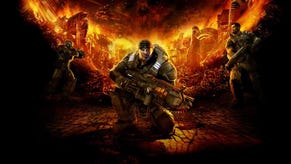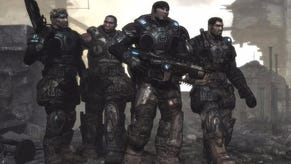Digital Foundry vs. Gears of War 3
Finishing the fight.
Another notable inclusion in the VFX toolbox is the excellent implementation of atmospheric rendering, giving a real sense of scale and ambience to a variety of levels. Alpha and particle effects in general are quite remarkable - a real improvement over what we've seen before in previous Unreal Engine games, and reminiscent at times of the gritty atmosphere evoked by Killzone 3 and Resistance 3. The fact that Unreal Engine 3 throw so many transparencies about while maintaining its performance level to the extent that it does is another feather in the cap of the Epic engineers.
In addition to all the visual eye candy we enjoyed in the game, the tech team also deserves kudos for the elements you don't notice. A case in point is the texture streaming system: it's long been a thorn in UE3's side - artwork appearing from nowhere during the Mass Effect era, resolved to a certain extent in Gears 2 with a new system whereby mip-maps are blended to make the arrival on-screen of new assets less noticeable. In the latest game, you'll be hard-pressed to find any kind of issue with this at all in-game, greatly enhancing the visual consistency of the game. In fact, the only really noticeable LOD popping we can recall seeing during the entire campaign occurred occasionally during the engine-driven cut-scenes.
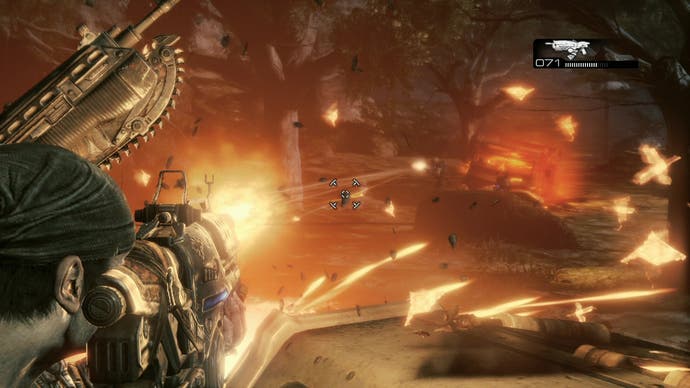
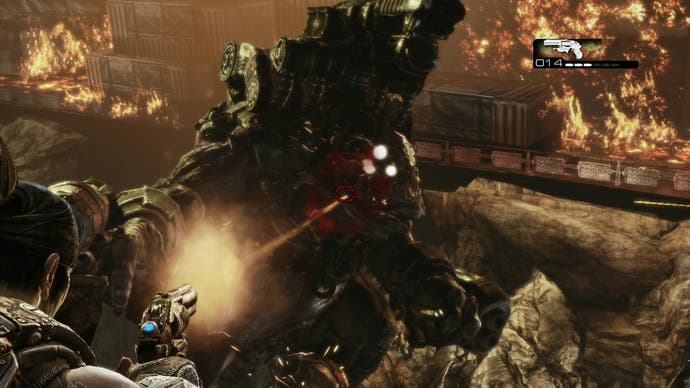

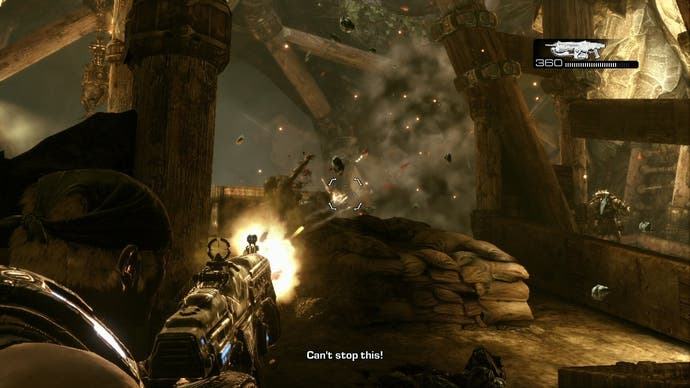
It's safe to say that Gears of War 3 is one of the most advanced video games of this generation, and a ringing endorsement of what the Xbox 360 is capable of handling when the right people, the right tech, a lengthy development cycle and an inordinately large budget are in play. From a technological perspective, with just a few caveats that we've touched upon, the overall presentation is first class. However, there is a clear area where Epic has had issues in improving upon past performance: the video-driven cinematics.
In common with previous Gears titles, Epic background-loads gameplay while FMVs play out on-screen. In order to sustain continuity, these sequences are actually produced by the Gears engine, but they're dumped out to disc and encoded as video as opposed to playing in real-time. The advantage is obvious - so long as you don't hit the "skip" button, the whole experience is seamless, like a movie. The negative point is that disc space is limited and as the Xbox 360 is effectively streaming multiple files at once, the available bandwidth for the video is low. Low levels of bandwidth needn't be a problem for an advanced code like h.264, but the utilisation of the aged Bink video system can't cope with resolving high levels of detail, producing blurry video with lots of macro-blocking - easily the least impressive element of the game.
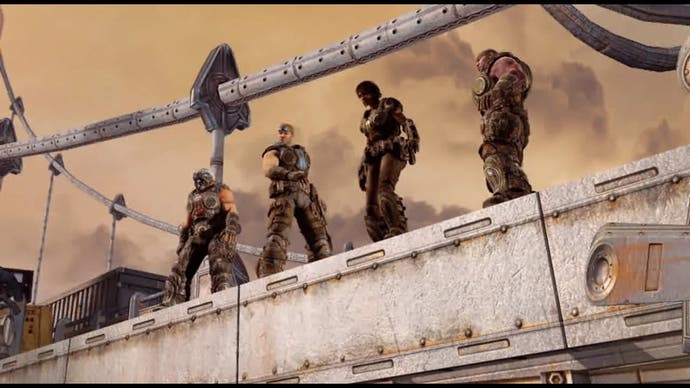

Looking at it from one perspective, dodgy video encoding in video games isn't really anything new. We see enough PS3 games shipping on 25GB Blu-rays with bandwidth-starved Bink video that perhaps we shouldn't be too upset when we see a 360 DVD-based game doing the same. On the flip-side, this is an element of the mega-budget first-party saga where we see very little technological advance since the Gears of War series began. More pertinently, FMVs are used to depict at least two crucial points in the story: one is the absolute emotional low point of the campaign, another is the ending itself. In both cases, the ultra-detailed, precision look of the game engine gives way to blur and artifacting.
It's hardly a deal-breaker, but the experience definitely feels cheapened at these points and we expected better. It's all the more strange because it's clear the Epic has pushed out the boat technologically in so many different directions. For starters, it's the first game to make use of the additional space afforded by Microsoft's new XGD3 disc format. Previously, 360 titles have been limited to 6.8GB of DVD space when the standard dual layer disc actually supports 7.95GB. XGD3 jettisons the 1GB of security bloat and offers up that space to developers for the first time. In the case of Gears 3, the disc translates to a 7.1GB optional hard disk install and around 1.4GB of that comprises of FMV sequences.
Gears of War 3 is also remarkable in that it's a first party Microsoft game that supports stereoscopic 3D - a precursor perhaps for the full HDMI 1.4 3DTV support upcoming in the next dashboard. We have heard some unconfirmed rumours that the game will be updated after the release of the new dash to support the 720p-per-eye standard, but in the here and now, Gears 3 retains the same native resolution as the 2D game overall, dishing out 640x720 per eye in the standard side-by-side configuration we've seen in all of the 360's 3D titles to date.
Bearing in mind that Gears of War is a cutting-edge Xbox 360 game, the 3D side of things is remarkably well featured bearing in mind that we've grown use to a number of visual cutbacks in order to support the format. Cut-down resolution aside, it's really difficult to find any kind of visual compromises in terms of the lush lighting or effects work. Geometry-wise, we don't really see anything in the way of a pared back experience - it's effectively the same game, with the same enviable visual feature set.
However, some compromises are evident in terms of performance. In this video, we compare the same sections of gameplay in both the standard 2D and 3D.
The results are intriguing. The obvious conclusion is that in many cases, rendered frames are running over budget, so the level of screen-tear is significantly increased over the 2D game, where performance only really suffers to a noticeable extent when explosions and VFX work combine to over-tax the engine. The added overhead of 3D here causes the game to exceed the rendering budget more frequently, resulting in more dropped frames and more tearing.
By and large though, the performance hit isn't especially onerous bearing in mind how little the core Gears 3 experience is being compromised. So how is this possible? It's not until you finish the game and run through the credits that you see the full range of partner technologies that Epic employed for the game - one of them is TriOviz.

